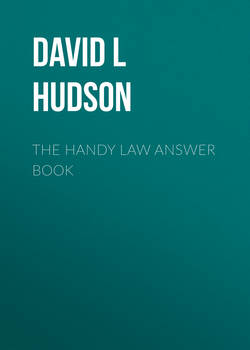Читать книгу The Handy Law Answer Book - David L Hudson - Страница 33
На сайте Литреса книга снята с продажи.
What is an example of a separation of powers problem?
ОглавлениеA prime example of a separation of powers problem presented itself in the Youngstown Steel case of Youngstown Co. v. Sawyer (1952). In that case, President Harry Truman seized control of the nation’s steel mills by executive order after hearing of a nationwide steel strike. President Truman feared that such a strike could cripple the U.S. national defense.
The U.S. Supreme Court ruled that the president exceeded his powers as the head of the executive branch, as the government control of the steel mills could only be accomplished by a federal law passed by the U.S. Congress. Thus, the president infringed on the powers of the legislative branch, creating a separation-of-powers problem. The ruling stated in part:
Nor can the seizure order be sustained because of the several constitutional provisions that grant executive power to the president. In the framework of our Constitution, the president’s power to see that the laws are faithfully executed refutes the idea that he is to be a lawmaker. The Constitution limits his functions in the lawmaking process to the recommending of laws he thinks wise and the vetoing of laws he thinks bad. And the Constitution is neither silent nor equivocal about who shall make laws which the president is to execute. The first section of the first article says that “All legislative Powers herein granted shall be vested in a Congress of the United States”….
The Founders of this Nation entrusted the lawmaking power to the Congress alone in both good and bad times. It would do no good to recall the historical events, the fears of power and the hopes for freedom that lay behind their choice. Such a review would but confirm our holding that this seizure order cannot stand.
